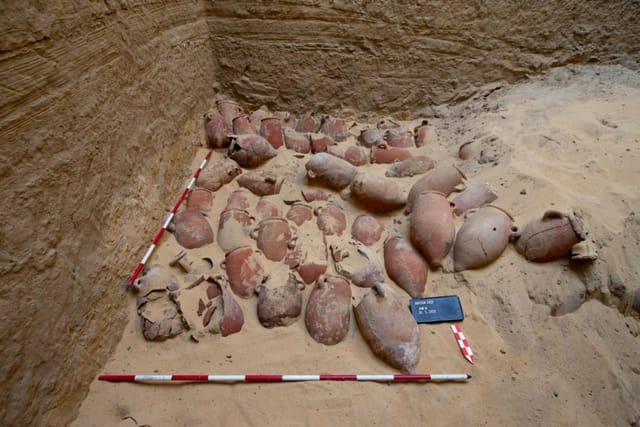Large Cache of Embalming Materials Discovered in Egypt
A team of Egyptologists from Charles University in Prague made the discovery in the western part of the ancient Egyptian necropolis of Abusir in the spring of last year when exploring a group of large shaft tombs located there.
The collection of large ceramic vessels, containing residues of various materials used during the mummification ritual, was found in one huge shaft, carefully placed in 14 layers.

The deposit, which dates back to the 6th century B.C., also included some other objects, says Jiří Janák from the Institute of Egyptology, who was one of the members of the research team:
“Among the objects, we found there were other smaller vessels as well as pieces of ashes from a fire that burned somewhere near the place where the person was mummified. We also found remnants of natron, a substance that the Egyptians used to dry the dead body.”
Experts also found residues of resins, oils or myrrh in the amphora-shaped containers. In addition to these, the deposit also contained four so-called canopic jars made of limestone, that were used for storing the viscera removed from the body during the embalming process.
“What we found were empty canopic jars, which had not yet been used. Interestingly, there were inscriptions on them including the name of the owner. That’s what helped us identify the person to whom this deposit belonged.”

So far, experts from the Czech Institute of Egyptology have only opened a part of the nearly 400 sealed vessels.
This year, they are going to continue to analyse the ceramic containers and their contents.
Another part of the team will be examining the adjacent structure right next to the mummification deposit. That will most likely be the tomb of the deposit’s owner, who, according to the inscriptions on the jars, was named Wahibre-mery-Neith.

The team of Czech Egyptologists has been working on the site in Abusir already since the 1960s and has one of the largest archaeological sites loaned by the Egyptians to foreigners, explains archaeologist Veronika Dulíková:
“Imagine an area that’s about two square kilometres in size. We have an amazing concession here with enormous potential.
We estimate that only around ten per cent of the total area has been explored so far.”
The burial site at Abusir has been continuously used throughout the whole of ancient Egypt’s history. Czech experts believe that the new discovery will shed more light on the process of mummification.
